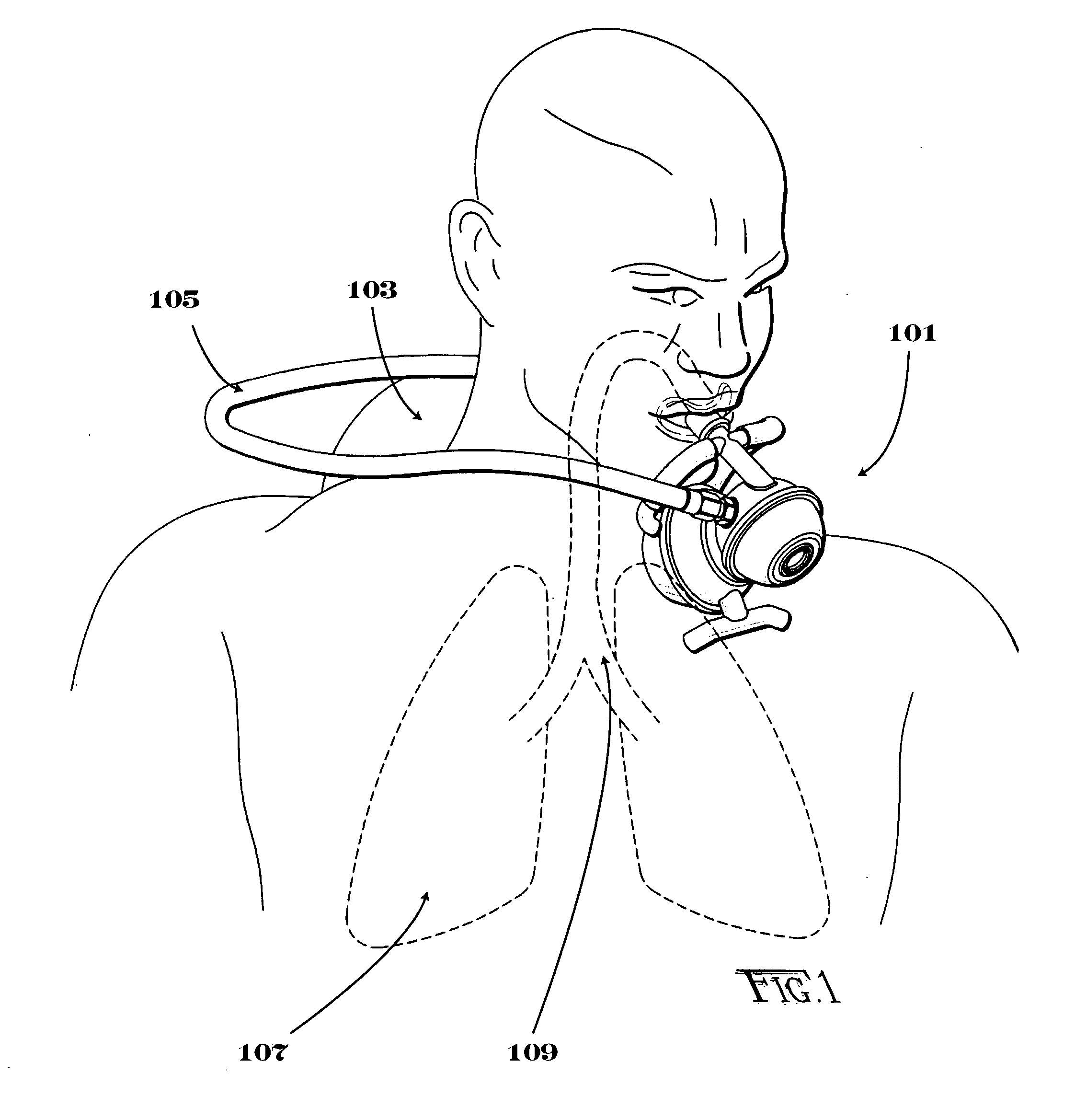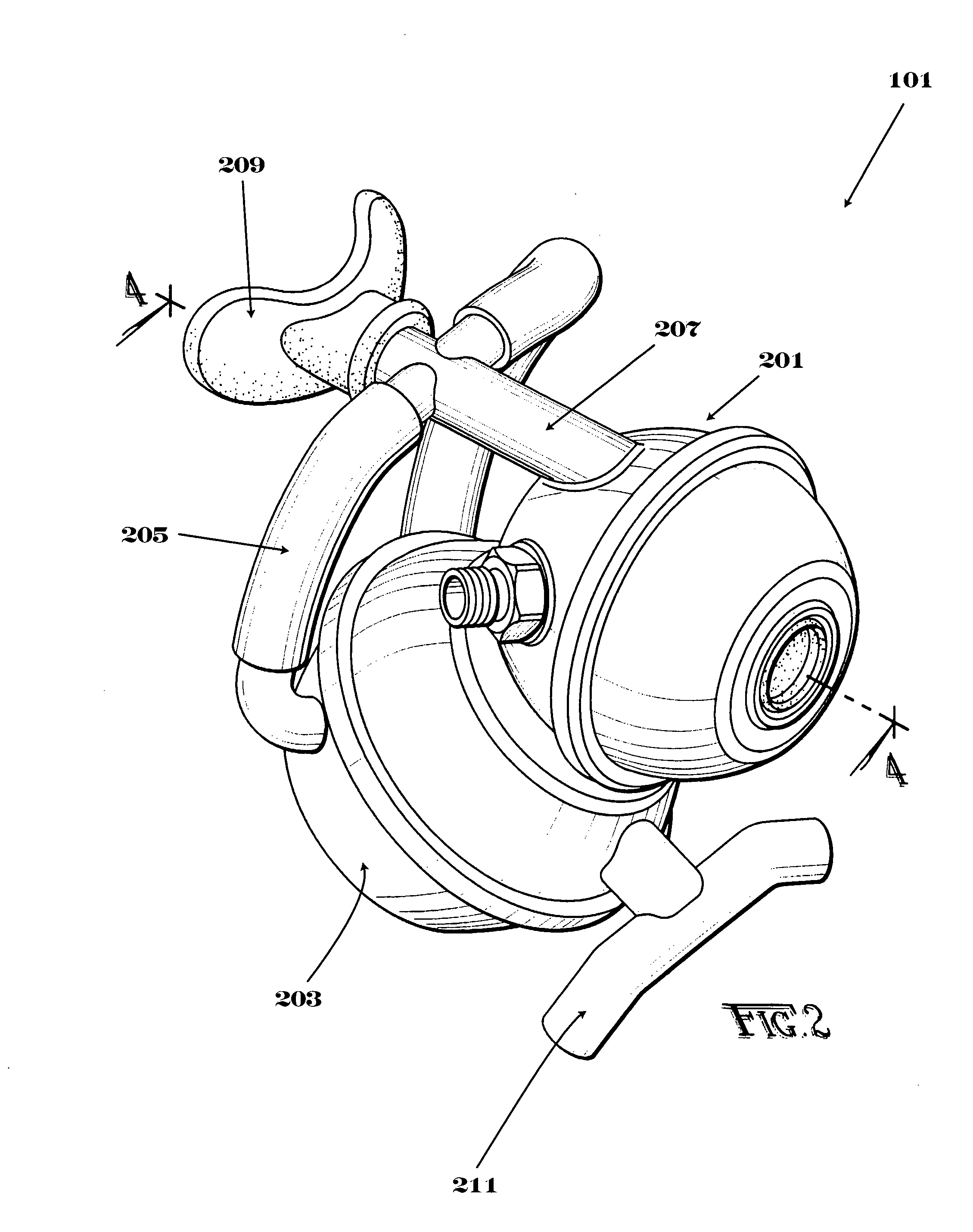Second stage regulator
a regulator and second stage technology, applied in the field of second stage regulators, can solve the problems of limiting the amount of air available to the diver, the diver had to stay near the surface, and the diver could only travel as far as the diving bell's air tube allowed, so as to achieve the effect of prolonging the dive tim
- Summary
- Abstract
- Description
- Claims
- Application Information
AI Technical Summary
Benefits of technology
Problems solved by technology
Method used
Image
Examples
Embodiment Construction
[0021]Referring now to FIG. 1, an improved second stage regulator 101 operates much like second stage regulators of the prior art. A diver attaches the improved second stage regulator to a first stage regulator (not shown) attached to an air tank 103 via hose 105. The first stage regulator and improved second stage regulator 101 generally operate to supply air on demand to the diver's lungs 107 at a usable pressure. The inventive step of the improved second stage regulator is that it conserves air exhaled from anatomic dead space 109 during the diver's normal respiratory cycle.
[0022]Referring now to FIG. 2, improved second stage regulator 101 comprises several additional components in addition to a demand valve housing 201. Conservation chamber 203 is connected to passageway 207 via one or more tubes 205. Tubes 205 serve as a conduit for air between mouthpiece 209 and conservation chamber 203. Passageway 207 may be elongated and may take many forms. Improved second stage regulator 1...
PUM
 Login to View More
Login to View More Abstract
Description
Claims
Application Information
 Login to View More
Login to View More - R&D
- Intellectual Property
- Life Sciences
- Materials
- Tech Scout
- Unparalleled Data Quality
- Higher Quality Content
- 60% Fewer Hallucinations
Browse by: Latest US Patents, China's latest patents, Technical Efficacy Thesaurus, Application Domain, Technology Topic, Popular Technical Reports.
© 2025 PatSnap. All rights reserved.Legal|Privacy policy|Modern Slavery Act Transparency Statement|Sitemap|About US| Contact US: help@patsnap.com



